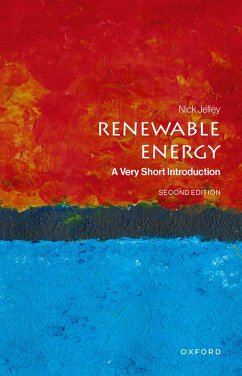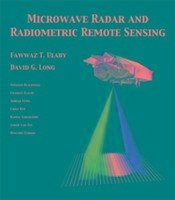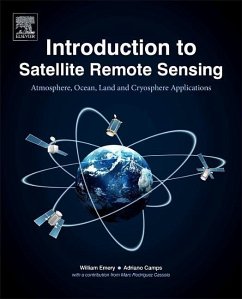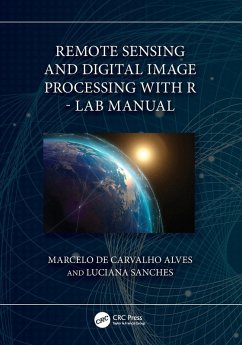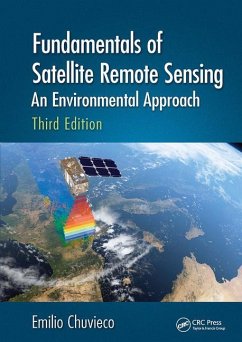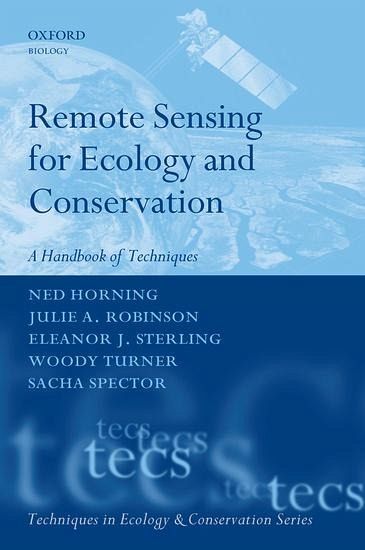
Ned Horning (Center for Biodiversity and American Mus ConservationJulie A. Robinson (USA NASA Johnson Space Center)Eleanor J. Sterling (Center for Biodiversity and Amer Conservation
Broschiertes Buch
REMOTE SENSING ECOLOGY CONSERV TECS P
Versandkostenfrei!
Versandfertig in 1-2 Wochen

PAYBACK Punkte
63 °P sammeln!




Remote sensing describes the technique of collecting information from a distance. This book describes the ways that remotely sensed data from research on biodiversity and its conservation can be captured and used, especially for evaluating human impacts on ecological systems.
Ned Horning started his 20-year career at NASA's Goddard Space Flight Center. For nine years he was involved in remote sensing applications research with spatial scales ranging from individual leaves to continents. This was followed by nine years working as an independent consultant where he worked on NASA-based education outreach to promote the use of satellite imagery in teaching and assorted conservation remote sensing projects. For the last two years Mr. Horning has been the Remote Sensing / GIS Program Manager for the American Museum of Natural History's Center for Biodiversity Conservation where he is actively involved in promoting and applying remote sensing tools for conservation. Dr. Julie A. Robinson joined the International Space Station Program at NASA Johnson Space Center in 2004, was named the Deputy Program Scientist in 2006, and Program Scientist in 2007. As Program Scientist, she serves as the chief scientist within the ISS Program, representing all research on the ISS, and providing recommendations to NASA Headquarters. She also continues interdisciplinary scientific work in ecology and remote sensing. Her most recent major collaboration was in developing a distribution network for global maps of coral reefs to make them accessible to natural resource managers in developing countries. She was assistant editor on the book: Dynamic Earth Environments: Remote Sensing Observations from Shuttle-Mir Missions (Wiley, 2000). She earned her Ph.D. in Ecology, Evolution and Conservation Biology from the University of Nevada, Reno in 1996. Dr. Eleanor Sterling is the director of the American Museum of Natural History's Center for Biodiversity and Conservation (CBC), where she oversees strategic planning and project development, leads fundraising efforts, and manages a multidisciplinary staff of over 30. Under Dr. Sterling's direction, the CBC established the Remote Sensing and Geographical Information Systems Facility. The GIS lab supports existing CBC research, and drives independent research projects by identifying potential survey sites, analyzing deforestation rates in focal study areas, developing and implementing spatial and non-spatial databases, advancing predictive modeling, and creating persuasive visual aids to enhance conservation strategies. Dr. Sterling has extensive expertise developing environmental education programs and professional development workshops, having trained teachers, students, and U.S. Peace Corps volunteers in a variety of subjects related to biodiversity conservation. Woody Turner has worked at NASA Headquarters in Washington, DC for over 20 years. Currently, he is the Program Scientist for Biological Diversity and Program Manager for Ecological Forecasting activities in the NASA Science Mission Directorate. As such, he supports and oversees research activities using NASA remote sensing systems to understand the environmental underpinnings of biological diversity at scales ranging from landscape to global. In addition, Woody has started a NASA ecological forecasting program, which brings together observations and associated models to understand the impacts of human activities on biological diversity. His graduate degrees are in international relations and conservation biology. Dr. Sacha Spector, Invertebrate Conservation Program Manager at the Center for Biodiversity and Conservation, oversees a number of projects related to developing scientific resources and practical approaches for invertebrate conservation. He also directs the CBC's Invertebrate Biodiversity Laboratory. Dr. Spector's research focuses on understanding and modeling patterns of insect communities' distributions across landscapes and their relationships with plant communities in order to define large-scale conservation plans that benefit insect species. Dr. Spector also serves as an adjunct assistant professor at Columbia University, where he teaches conservation biology and insect conservation, and as Chair of the Terrestrial Invertebrate Red List Authority for the IUCN Species Programme. He received his Ph.D. in Ecology and Evolutionary Biology from the University of Connecticut in 2001, where he held a NASA Graduate Student Researchers Program Fellowship.
Produktdetails
- Techniques in Ecology & Conservation
- Verlag: Oxford University Press
- Seitenzahl: 494
- Erscheinungstermin: 1. Juli 2010
- Englisch
- Abmessung: 234mm x 156mm x 26mm
- Gewicht: 828g
- ISBN-13: 9780199219957
- ISBN-10: 0199219958
- Artikelnr.: 30179247
Herstellerkennzeichnung
Libri GmbH
Europaallee 1
36244 Bad Hersfeld
gpsr@libri.de
Für dieses Produkt wurde noch keine Bewertung abgegeben. Wir würden uns sehr freuen, wenn du die erste Bewertung schreibst!
Eine Bewertung schreiben
Eine Bewertung schreiben
Andere Kunden interessierten sich für




